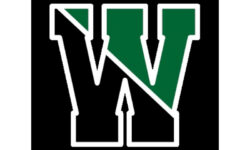It was four years ago that the administration at Westwood’s Thurston Middle School decided they needed a STEM program with a robust engineering and computer science component. Now, the school is preparing to graduate the first class of students to have made its way through the entire program.
While it was more of a pilot program in its first year, the school expanded it for the incoming 6th graders for the 2016-2017 school year. Those same students are now the 8th graders in the final year of that full curriculum.
David Lamb is one of the teachers in the computer science and engineering program. He is proud of the accomplishments of the nearly 700 middle school students who took part in these classes.
“My goal is to create an inquisitive researcher,” he said. “I have them for only 90 days over three years. I hope they leave knowing there is so much more for them to learn.”
The classes ratchet up the challenges in the project-based curriculum each school year. The 6th grade students begin with an introduction to engineering, literally learning about its different disciplines.
“They’ll look at civil engineering, mechanical engineering, chemical engineering – all the different types,” Lamb explained. “This is followed by presentations in which students share what they’ve learned.”
After that point, the focus turns to a look at the state of engineering, its history and future.
“The goal is to figure out the challenges out there,” he said. “What has engineering figured out? What is it still figuring out? What are the goals for the future?”
In 7th grade, the students design cars. They are divided into three groups, each focused on a different design specialty: speed, safety or cost. The groups each devise their design specifications to make their models the fastest, safest or least expensive. Then the groups are shuffled to have representatives of each specialty working together. Their goal is to build a best-in-class car. The process, according to Lamb, forces students to compromise and consider all facets of the end goal. The test vehicles are judged, in part, by how well they protect an egg from cracking while traveling downhill.
Many an egg will end up broken. In fact, students are not expected to succeed the first time out. It’s quite the opposite.
“We will always find the fail point. That’s when they know where to go back to work,” said Lamb. “It’s important that they see failure as an interim process. Failure is essential to learning.”
In the third and final year, the tools the 8th graders use include a 3-D printer and “Tinkercad” software. The students use the program to create 3-D designs, learn how to code, and make electronics work.
Only after the kids have proven proficiency in “Tinkercad” are they able to start using the printer. They are challenged to duplicate shapes in the real world through their designs. These are then printed and compared to the originals.
“We had two kids both designing LEGO pieces, unbeknownst to each other,” Lamb offered as an example. They ended up fitting perfectly together and with real LEGO.
“It was really very impressive.”
Lamb hopes the future of the program will evolve to include the designing and building of fully functioning robots. That would combine the computer design, 3-D printing, and assembly working circuit boards also created by the kids. He sees robotics as a perfect launch point to utilize real world technology and, eventually, help boys and girls land dynamic engineering jobs.
The curriculum – and the approach – Lamb says, is meant to encourage students to think creatively and take chances.
“I would much rather have a kid who is trying and failing than one who does well enough on a standardized test and nothing more,” said Lamb.
While Lamb hopes that all of his students will develop a love of learning, he has a particular focus for inspiring girls to stick with STEM, though statistics show that not as many girls go on to study STEM subjects in college.
“I want them to know that girls can be successful at this,” he said. “It is for them, too.”





















